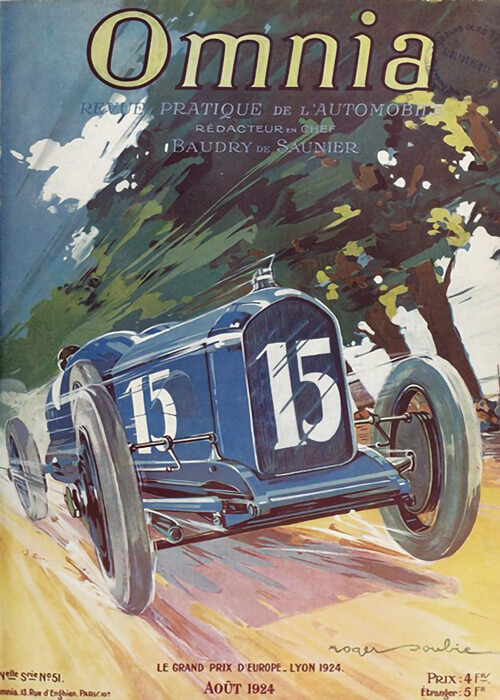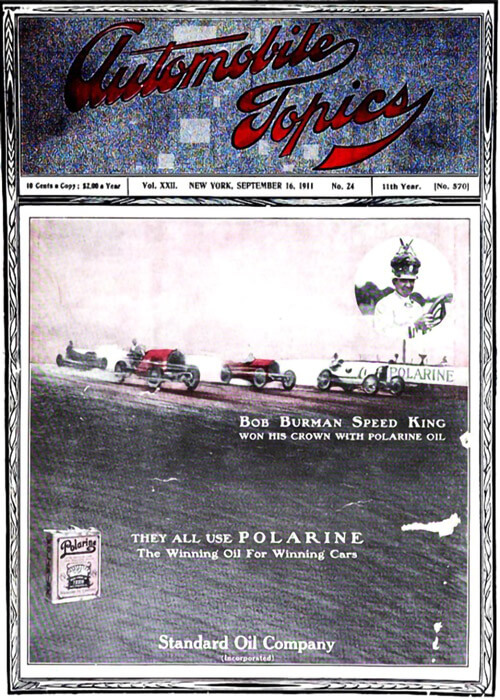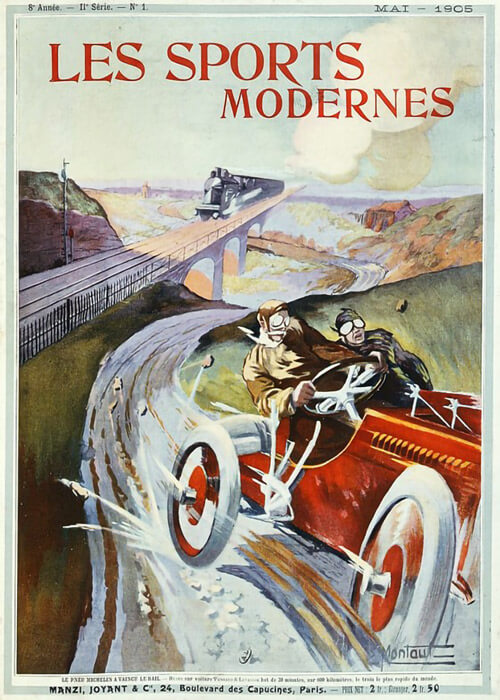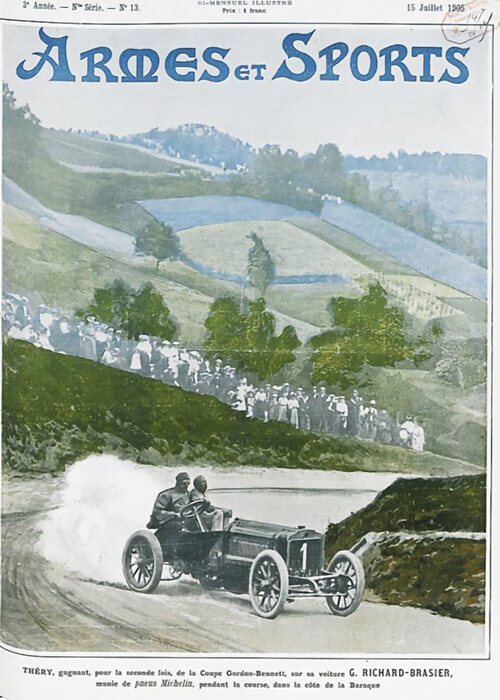The 1912 Indianapolis 500 and a „lure’o gold“.
The only improvement to the golden formula created this year was an increment of the amount of prize money, still only to be paid out to the first 10 finishers. In lap 87, after leading 85 laps in the race and already having led 4 laps in 1911, DePalma became the new all-time leader at Indy with the most laps lead.
By the way, it was 75 years later in 1987 when Al Unser Snr finished (and won) the race when Ralph was finally joined as all-time lap leader! DePalma ended the race having led 200 laps in the two 500 Miles races up to now, but not having won one.
And then there was this year’s race winner, Joe Dawson who had led only two laps; the only laps he would ever lead in Indianapolis. What happened: driving way out in the lead and with only 1¼ laps to go, De Palma’s Mercedes came to a standstill with a broken connecting rod. Ralph and his mechanic pushed the car to the finish, only to be classified 11th, out of the money because only the top 10 was paid prize money. A typical moment in an event that confirmed so early in it’s history the classic status of Indianapolis.
The 10th place finisher – Mulford – came in with a very crippled car whose driver & mechanic hung on only because 200 laps had to be driven to classify as a finisher. Despite pleas to grant him 10th place & the money that came with it, officials insisted on finishing the distance. Which was to cost them their late afternoon and early evening. Ralph Mulford‘s 56.285 mph average of over 200 laps remained the slowest average ever for the distance, and the manner how it was achieved warranted a rule change for the future.
Another record never broken anymore: due to rule changes regarding the engine capacities, the winning National of Joe Dawson remains the winning car with the largest engine capacity in Indy History: 490.8 cu. in. being about 8 liters. YKW
Indianapolis 500 – 1912
The Horseless Age
- Awaiting Second Five Century Race - under construdtion
MoToR
Motor Age
- Twenty-Seven Final Hoosier Count - under construction
- Troubles that Made Cars Stop at Pits - under construction
- Contest Board Rejects De Palma's Marks - under construction
Motor World
- All in Readiness for Five-Century Grind - under construction
- Just how Joe Dawson got Rich Quickly - under construction
The Automobile
- Ready for the Word at Indianapolis - under construction
- Performances of the Contesting Cars - 6 June 1912
Automobile Topics
- Stage is Set for Speedway Race - under construction
- Speedway Victory Goes to Dawson and his National - u. c.
- DePalma's Time Deniad as Records - under construction
- Prize Money for Speedway Losers - under construction
The Automobile Journal
- Second 500-Mile Sweepstakes Race - under construction
- Ready for Memorial Day Contest - under construction
- Dawson Wins in a National - under construction





